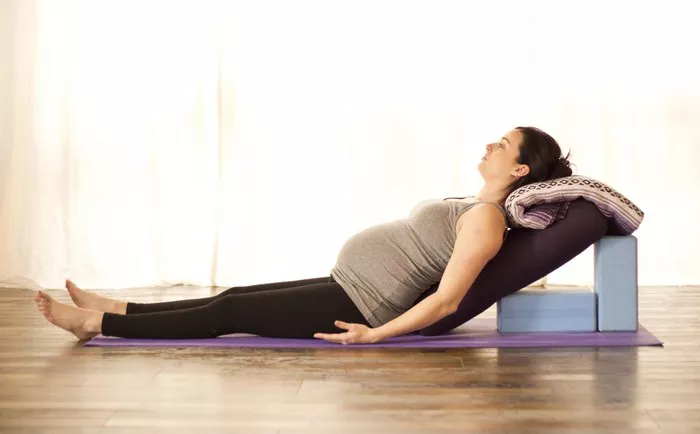Pregnancy is a beautiful journey marked by significant physical and emotional changes. As expectant mothers navigate this transformative time, they often seek safe and effective ways to stay active and prepare their bodies for childbirth. One popular option is pregnancy yoga, a gentle practice tailored to the needs of pregnant women. But a common question arises: When is the right time to start pregnancy yoga? In this article, we’ll explore this question in detail, providing specific answers to guide expectant mothers on their yoga journey during pregnancy.
Understanding Pregnancy Yoga: A Brief Overview
Before delving into when to start pregnancy yoga, it’s essential to understand what this practice entails. Pregnancy yoga, also known as prenatal yoga, is a specialized form of yoga designed to support expectant mothers throughout each stage of pregnancy. It incorporates gentle stretches, breathing techniques, and relaxation exercises to promote physical and emotional well-being during pregnancy.
One of the key principles of pregnancy yoga is safety. Unlike traditional yoga classes, which may include intense poses and sequences, prenatal yoga focuses on poses that are safe for pregnant women and their growing babies. Additionally, pregnancy yoga instructors are trained to modify poses to accommodate the unique needs and limitations of expectant mothers.
Now that we have a basic understanding of pregnancy yoga, let’s explore the optimal time to start practicing.
First Trimester: Laying the Foundation
The first trimester of pregnancy is a critical time characterized by significant changes in the body. During this period, many women experience symptoms such as nausea, fatigue, and hormonal fluctuations. While these symptoms can make it challenging to engage in physical activity, some women may still feel up to practicing yoga.
For women who were regular practitioners of yoga before pregnancy, continuing their practice into the first trimester may be feasible, with some modifications. However, it’s essential to listen to your body and avoid pushing yourself too hard. If you feel lightheaded, dizzy, or uncomfortable during a yoga session, it’s best to take a break and rest.
For those new to yoga or experiencing severe pregnancy symptoms, it may be wise to wait until the second trimester before starting prenatal yoga. This allows time for any early pregnancy symptoms to subside and for the body to adjust to the changes of pregnancy.
Second Trimester: Embracing Prenatal Yoga
The second trimester is often referred to as the “honeymoon phase” of pregnancy, as many women experience a decrease in symptoms such as nausea and fatigue. This period, typically spanning weeks 13 to 28 of pregnancy, is an excellent time to start pregnancy yoga for many expectant mothers.
During the second trimester, the baby bump becomes more prominent, and women may notice changes in their balance and flexibility. Pregnancy yoga can help address these changes by focusing on poses that support the spine, strengthen the pelvic floor, and alleviate common discomforts such as back pain and sciatica.
When starting prenatal yoga in the second trimester, it’s essential to find a qualified instructor who specializes in teaching pregnant women. These instructors are trained to modify poses and sequences to ensure they are safe and beneficial for expectant mothers.
Third Trimester: Nurturing Body and Mind
As the due date approaches, many women find comfort and support in their prenatal yoga practice during the third trimester. This period, which typically begins around week 29 and continues until childbirth, is characterized by increased physical discomfort as the baby grows and puts pressure on the internal organs.
Pregnancy yoga during the third trimester focuses on preparing the body for childbirth and promoting relaxation and stress relief. Gentle stretches and breathing exercises can help alleviate tension in the muscles and promote a sense of calmness amidst the anticipation of labor and delivery.
It’s important to note that as the pregnancy progresses, certain yoga poses may become more challenging or uncomfortable. Expectant mothers should listen to their bodies and modify their practice as needed. Additionally, practicing yoga under the guidance of a knowledgeable instructor can provide valuable support and guidance during this stage of pregnancy.
Benefits of Pregnancy Yoga
Now that we’ve discussed when to start pregnancy yoga, let’s explore some of the benefits expectant mothers can experience from this practice:
1. Physical Well-being: Pregnancy yoga helps improve flexibility, strength, and circulation, which can alleviate common discomforts such as back pain, swelling, and insomnia.
2. Emotional Support: The breathing techniques and relaxation exercises taught in prenatal yoga can help reduce stress, anxiety, and depression, promoting overall emotional well-being during pregnancy.
3. Preparation for Childbirth: Many prenatal yoga classes include specific exercises and techniques to prepare the body for labor and delivery, such as pelvic floor exercises and breathing practices.
4. Connection with Baby: Pregnancy yoga provides an opportunity for expectant mothers to connect with their babies on a deeper level through mindfulness and visualization exercises.
5. Community Support: Attending prenatal yoga classes allows expectant mothers to connect with other women who are experiencing similar joys and challenges, providing a sense of community and support.
Conclusion
Pregnancy yoga offers numerous benefits for expectant mothers, promoting physical health, emotional well-being, and preparation for childbirth. While the optimal time to start prenatal yoga may vary for each woman, the second trimester is generally a safe and beneficial time to begin practicing. However, it’s essential to listen to your body and consult with your healthcare provider before starting any new exercise regimen during pregnancy.
By practicing prenatal yoga under the guidance of a qualified instructor and making modifications as needed, expectant mothers can enjoy a safe and fulfilling yoga practice throughout each stage of pregnancy. Embracing the principles of mindfulness, self-care, and connection with their babies, women can experience the transformative power of pregnancy yoga on their journey to motherhood.
FAQs:
What yoga is best in the first trimester?
During the first trimester, gentle and restorative yoga practices are recommended. Prenatal yoga classes tailored specifically for pregnant women often include modified poses suitable for the early stages of pregnancy. Focus on poses that promote relaxation, gentle stretching, and breath awareness. Avoid strenuous poses, deep twists, and inversions, and listen to your body’s cues to avoid overexertion.
Is yoga okay at 5 weeks pregnant?
Yes, yoga can be safe at 5 weeks pregnant, but it’s essential to practice with caution and listen to your body. During the early stages of pregnancy, some women may experience symptoms such as nausea and fatigue, which can affect their ability to practice yoga comfortably. If you feel up to it, consider attending a prenatal yoga class or practicing gentle yoga at home. Remember to avoid strenuous poses and listen to any discomfort or fatigue signals from your body.
Is walking better than yoga during pregnancy?
Both walking and yoga offer benefits during pregnancy, so the choice ultimately depends on individual preferences and physical condition. Walking is a low-impact exercise that helps maintain cardiovascular health, strengthens muscles, and improves mood. On the other hand, yoga provides additional benefits such as flexibility, stress reduction, and preparation for childbirth. Many pregnant women find a combination of walking and yoga to be beneficial for overall health and well-being. Consult with your healthcare provider to determine the most suitable exercise regimen based on your specific needs and circumstances.















